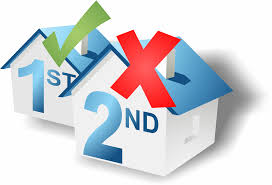 You don't see many new second mortgages on commercial properties these days. The reason why is because most modern first mortgage loan documents contain an outright prohibition against any sort of junior financing. It's not just conduits that prohibit junior financing. Commercial banks now also prohibit junior financing.
You don't see many new second mortgages on commercial properties these days. The reason why is because most modern first mortgage loan documents contain an outright prohibition against any sort of junior financing. It's not just conduits that prohibit junior financing. Commercial banks now also prohibit junior financing.
The section of a first mortgage that prohibits junior financing is called the alienation clause. An alienation clause is one that says that the alienation (transfer) of any interest in the property, without the permission of the lender, is grounds to accelerate the loan and to demand that the loan be immediately paid in full. The really sucky part of such an acceleration is that the payoff demand will contain the full prepayment penalty! Ouch.

"But George, what if there is tons of equity in the property?"
One way a big-time investor can pull equity out of an underleveraged commercial property is to obtain a mezzanine loan. Unfortunately mezzanine loans and preferred equity investments are also considered junior financing and are usually prohibited. In some cases, however, an intercreditor agreement can be negotiated.

An intercreditor agreement is an agreement between a first mortgage holder and the provider of junior financing, which could be a second mortgage lender, a mezzanine lender, or a preferred equity investor. The first mortgage lender looks at the junior lender for experience in actually operating the type of property involved and for his financial strength. If the junior lender is a newbie with no financial strength, the first mortgage lender will say no. If the junior lender is an old pro with deep pockets, the first mortgage lender will sometimes agree in writing to permit the junior financing. There is often a provision that says that the first mortgage lender will notify the junior lender immediately in the event of a default. The intercreditor agreement will also often allow the junior creditor to buy the first mortgage in the event of a default.

Okay, with this long-winded background in mind, we finally get to the point of today's training lesson. This week a buddy of mine who makes preferred equity investments (like a second mortgage but with no required monthly payments) sent out a tombstone. He proudly announced that his company had just made a second mortgage of $1.4 million behind a $32 million first mortgage on a $50 million shopping center in Kansas City.
Holy crap! A second mortgage of only $1.4 million behind a $32 million first mortgage??? So I wrote to him, "My friend, this loan grossly violates the New-Money-to-Old-Money Ratio."

Back in the old days of hard money, second mortgage lenders learned the hard way never to make a small second mortgage behind a huge first mortgage.
Example:
Newbie Mortgage makes a $20,000 second mortgage behind a $500,000 first mortgage on a house worth $1 million. There is tons of equity. Then the borrower becomes a crack addict and stops making all payments. By the time the second mortgage finds out, the first mortgage is behind 7 payments of $4,000. Just to cure the loan, Newbie Mortgage has to come up with $28,000.
Then Newbie Mortgage is facing another nine-month ordeal to march to a trust deed sale and to obtain relief from the automatic stay of bankruptcy. That’s another $36,000. And then there are attorneys fees and foreclosure costs. That’s an advance of over $54,000 - just to protect an original investment of $20,000.
Ninety percent of similar investors, in real life, end up just walking away from their $20,000 loan.

The Irony:
The first mortgage lender goes to a foreclosure sale. No one bids, so the first mortgage investor ends up owning the property. After a $15,000 clean-up and facelift, the lender ends up later selling the property for $1.3 million. Arghh.
New-Money-To-Old-Money Ratio
New Money / Old Money > 33%
In plain English, the wise second mortgage investor will avoid making any second mortgage where this ratio is less than 33%. In other words, the second mortgage should be at least one-third the size of the first mortgage for the reasons explain above.

Now back to my buddy's deal: Let's compute his New-Money-to-Old-Money Ratio.
($1.4 million / $32 million) x 100% = 4.3%
Holy crap! This ratio is never supposed to be less than 33%.
Now my buddy is pretty sophisticated and he pointed out that his Fund had negotiated a very good Intercreditor Agreement. The underlying first mortgage holder had agreed to notify them immediately in the event of a default.

In addition, his Fund had the option to purchase the underlying first mortgage in the event of a default. His Fund would love to own this $32 million first mortgage because it had an attractive default interest rate. It would also love-love-love to own this gorgeous shopping center for a mere $32 million.
He had also gotten personal guarantees from the high net worth borrower and other high-equity LLC's. Lastly, the shopping center had a number of long-term leases from credit tenants and near-credit tenants.
By the end, I agreed that his was a reasonably prudent investment, but only because his Fund had deep-deep pockets.

Folks, I have done a pretty smart thing. I have started to trade my wonderful video training courses to mortgage brokers all across the country for a list of ten bankers making commercial loans. We are adding these banks to CommercialMortgage.com ("CMDC") in huge handfuls. Man, CMDC is getting soooo useful. And its free!














